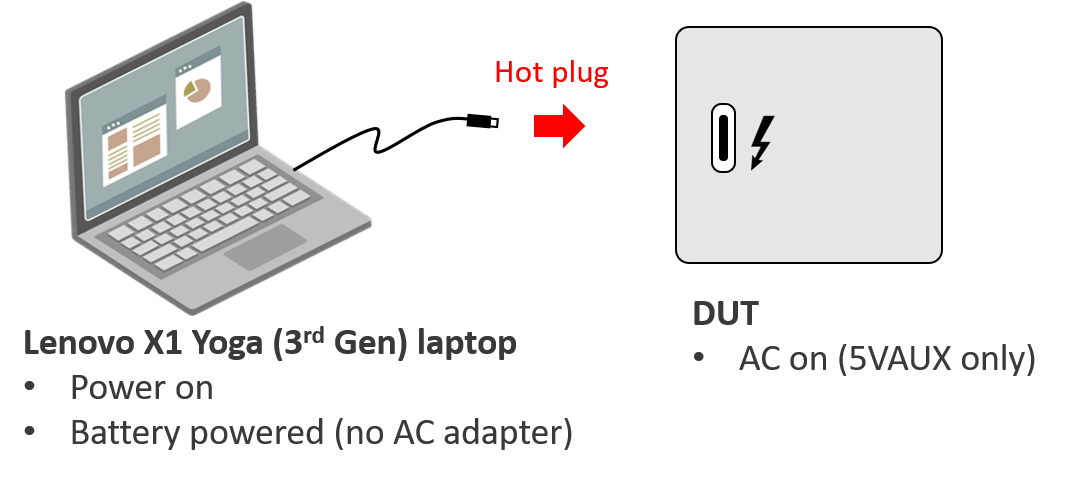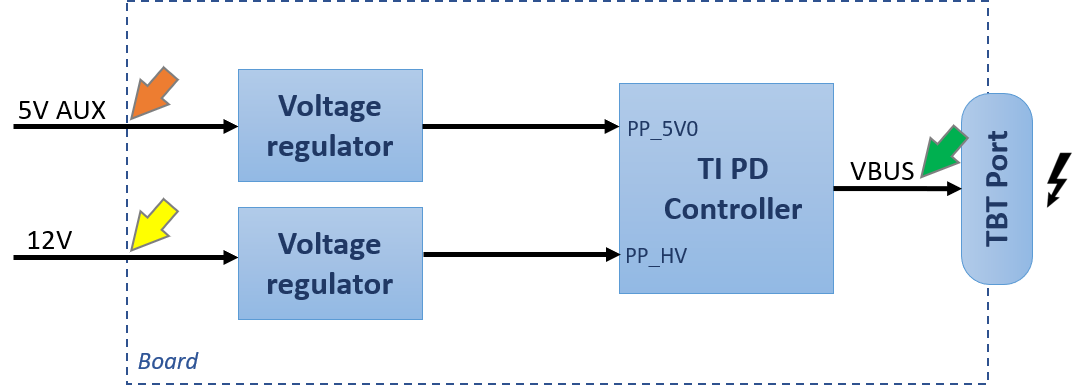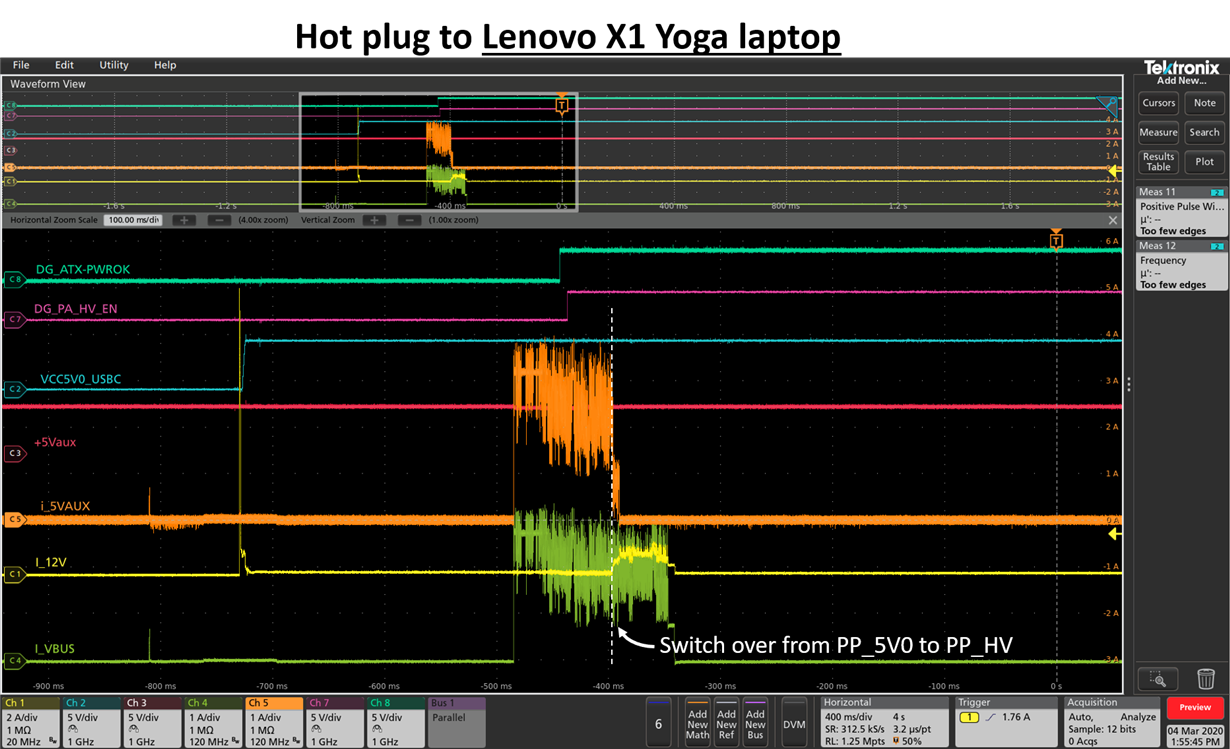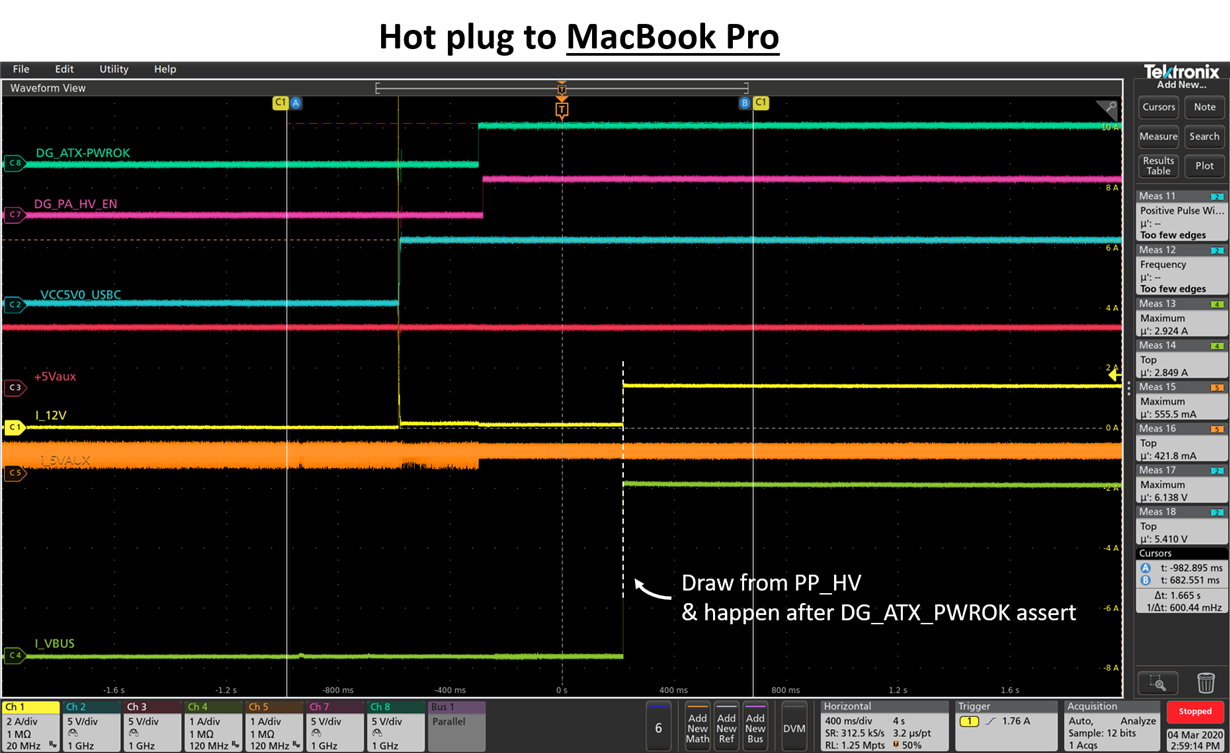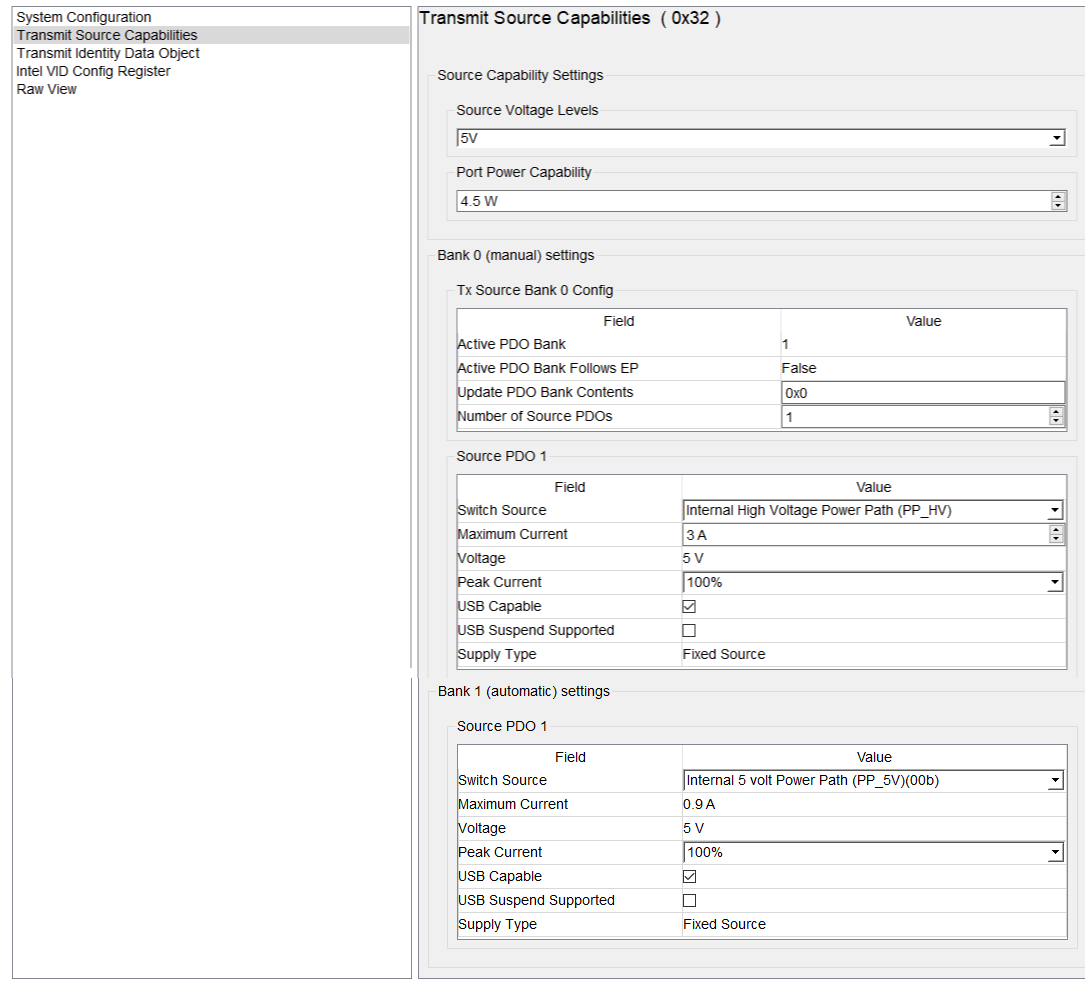Our product is designed based on the Thunderbolt Intel Reference Design of APEX CREEK ATX. And we’re supporting the ATX firmware functionality (based on Intel reference).
We are currently observing an outlier behaviour when a Lenovo X1 Yoga (3rd gen) is hot-plugged into our product when running from AUX power.
When a Lenovo X1 Yoga Laptop is hot-plugged to our product, there is a huge current pulse (3A) being drawn from the Lenovo laptop from AUX power. This behavior is different compare to what we see from a hot plug to MacBook or Dell Latitude Laptop. Additionally, we’re expecting that the TI TPS65983B should switch to the main power rails (since we’re using the ATX firmware) so that the current would be drawn from the main power instead of drawing from the AUX power rail.
Below are the probe point & scope shot that we have with Lenovo.
The Lenovo start to draw current before DG_ATX_PWROK asserted. Hence, VBUS is drawing current from PP_5V0 (Aux power) & only switch over to PP_HV (main power) after DG_ATX_PWROK assert.
Compare to hotplugging to a Macbook, PD happens after DG_ATX_PWROK. Hence, VBUS is drawing current from the main voltage. (which is correct behaviour)
Question:
1. Please help in explaining the current behaviour seen on the Lenovo laptop.


